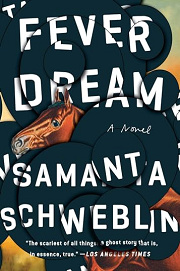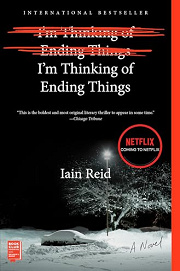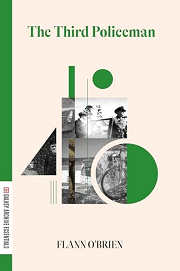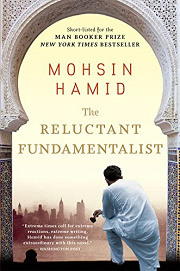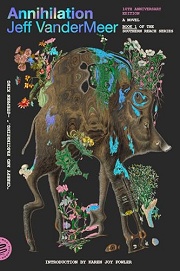Share your thoughts in a quick Shelf Talk!
Fever Dream by Samanta Schweblin
A feverish conversation in the countryside peels back layers of dread as a woman tries to understand what has happened to a child—and why the landscape itself feels poisoned. Told in hypnotic fragments that build unbearable tension, Fever Dream is a haunting, eco-tinged nightmare you won’t shake once you close the book.
Have you read this book? Share what you liked (or didn’t), and we’ll use your answers to recommend your next favorite read!
Love Fever Dream but not sure what to read next?
These picks are popular with readers who enjoyed this book. Complete a quick Shelf Talk to get recommendations made just for you! Warning: possible spoilers for Fever Dream below.
In Fever Dream, did you enjoy ...
... a voice you can’t fully trust guiding you through mounting dread?
I'm Thinking of Ending Things by Iain Reid
If you were gripped by how Amanda’s conversation with David keeps slipping between memory and menace—never letting you know what’s real—then you’ll love the way I’m Thinking of Ending Things confines you to a narrator’s troubled mind while reality frays at the edges. Like the way the “rescue distance” fixates Amanda until it distorts everything from Carla’s story to the poisoned horses by the stream, Reid’s narrator spirals through a road trip and an eerie school visit where certainty collapses and every detail feels like a trap.
... unnerving, dream-logic horror where cause and effect no longer behave?
The Third Policeman by Flann O'Brien
If the surreal interrogations in Fever Dream—David pressing Amanda to find the exact moment when “the worms” entered, the soul-splitting healer, the sickening water—left you thrilled by that off-kilter, fevered logic, The Third Policeman deepens that sensation. Its narrator wanders a countryside where bicycles and bodies exchange atoms, and policemen enforce rules that feel as arbitrary and terrifying as David’s relentless questions. It’s the same skin-prickle of dread when familiar rules go wrong.
... a tight, one-sitting conversation that strips a life to its exposed nerves?
The Reluctant Fundamentalist by Mohsin Hamid
If you liked how Fever Dream traps you in a single, urgent dialogue—Amanda on a hospital bed, David guiding her back through Carla, Nina, and the toxic stream—Hamid’s slim novel offers that same claustrophobic intensity. One voice addresses a silent listener over a single evening, and the tension builds in what’s said and unsaid, just as David’s prompts force Amanda to revisit the moments she missed. It’s intimate, inexorable, and impossible to look away.
... the creeping terror of an ecosystem that corrupts bodies and memory?
Annihilation by Jeff VanderMeer
If the poisoned water, dead animals, and warped child in Fever Dream haunted you—Carla’s desperate gamble with the healer, Amanda tracking the “rescue distance” as toxins seep into every choice—Annihilation channels that same eco-horror. A biologist’s field journal in a contaminated zone documents mutations, disappearances, and a landscape that gets inside you. The dread isn’t just out there; it colonizes the mind, just as David insists the exact moment of contamination matters.
... a stark, confessional form that probes the terrors of motherhood?
We Need to Talk About Kevin by Lionel Shriver
If Amanda’s fixation on Nina’s safety—the measured “rescue distance,” the tallying of risks—made Fever Dream hit hard, Shriver’s epistolary novel turns that same forensic gaze on motherhood’s dread. Through Eva’s letters, you watch her excavate every early sign and overlooked moment with Kevin, much as Amanda replays Carla’s warnings and the night at the stream. The single-voice, document-like narrative tightens the screws until love and fear are indistinguishable.
Unlock your personalized book recommendations! Just take a quick Shelf Talk for Fever Dream by Samanta Schweblin. It’s only a few questions and takes less than a minute.
